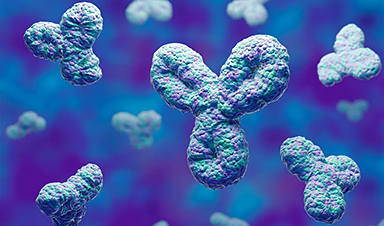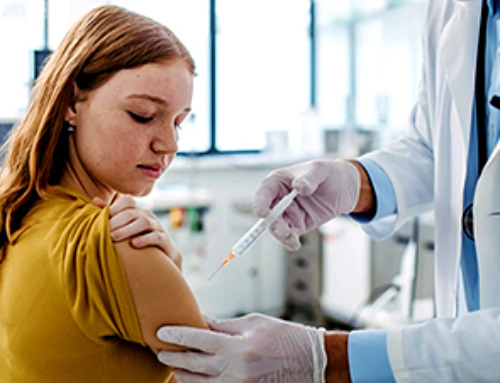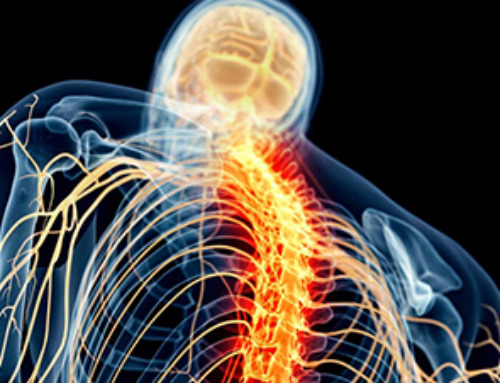A recent study submitted to the journal Chemosphere focuses on developing an electrochemical sensor for the sensitive detection of indinavir (IDV), an anti-retroviral HIV medication, by combining zinc oxide nanorods and molybdenum disulfide nanosheets on a screen-printed electrode.
What is Indinavir (IDV)?
Indinavir (IDV) is a drug used to treat the human immunodeficiency virus (HIV) that works by inhibiting the infection, acting as a semisynthetic blocker of HIV-1 and HIV-2 proteases.
Due to indinavir’s negative effect on human health, it is critical to developing an effective electrode for detecting IDV in biological settings. High-performance liquid chromatography (HPLC), spectrometry, ion chromatography, and liquid chromatography-tandem spectroscopy are often used to determine indinavir. These approaches analyze IDV in actual specimens based on different sampling and offshore laboratory assessments.
Despite their sensitivity and selectivity, routine laboratory methods are generally inaccessible to communities with the highest need due to the high cost, infrastructural limits, operating capabilities, and a shortage of onsite operability.
Electrochemical Sensors for Detection of IDV
Electrochemical sensors are mobile, flexible, low cost, responsive, and have high specificity. These are essential for enhancing chemo- and bioimaging techniques and provide a perfect foundation for developing enhanced capabilities. As a result, electrochemical-based sensors seem to be a feasible alternative for tracking IDV in a rapid, measurable, low-cost, and large-scale way.
Molybdenum Disulfide (MoS2): An Important Nanomaterial
Over the past couple of decades, nanoscale research has gained widespread recognition as a remarkable technological field that has influenced a wide range of industries. Furthermore, it brings up a plethora of opportunities for developing and implementing innovative designs, products, and systems in a variety of disciplines, including farming, food, transportation, and medical research and development.
Scientists have lately refocused their attention on other graphene-like 2D compounds to overcome the shortage of graphene and broaden the range of its applications. Molybdenum disulfide (MoS2), a multifunctional compound that has sparked a great deal of interest in nanotechnology and optoelectronic devices, is employed as a filler material and a catalyst for the hydrodesulfurization process.
As a conventional 2D layered material, it has excellent thermal resilience and strong electrocatalytic performance, making it appropriate for a wide range of applications such as detectors, electro-catalysts, superconductors, and energy storage systems. Furthermore, MoS2 with an uneven number of layers can produce alternating piezoelectric current and voltage impulses, suggesting that it could be used to operate nanodevices and wearable electronics.
Use of Metal Oxide Materials in Electrochemical Sensors
Due to their exceptional photocatalytic capabilities, metal-oxide compounds have gotten a lot of interest in recent years for use in improved electrochemical sensors. Zinc oxide (ZnO) has sparked substantial attention among metal oxide materials because of its desirable features, which include cheap cost, large availability, and a broad energy bandgap. These nanoparticles are susceptible to many contaminants, including practically all major metal ions and organic compounds.
In this work, ZnO and MoS2 were combined as electrochemical electrodes to create a multifunctional film-modified electrode for the fast monitoring of anti-retroviral (HIV) drugs. The anti-retroviral drug IDV was selected as the model drug for electrochemical sensing. The hydrothermal synthesis technique was used to produce the MoS2-based mixture with metal oxides, which was then used to change the SPE interfaces and build the appropriate electrolytic electrode.
Important Research Findings
The designed electrode was revealed to have a considerable electrocatalytic behavior with a large dynamic linear range. When used for IDV measurement in urine and blood plasma samples, the ultrasensitive electrochemical electrode composed of zinc oxide nanorods and molybdenum disulfide nanosheets achieved good results.
IDV was measured electrochemically using the proposed electrode, which has superior sensitivity, reproducibility, consistency, specificity, and recyclability. The developed biosensor was also used to test IDV levels in biological specimens, and the findings were satisfactory, with a recovery efficiency of more than 98.5 percent. These nanomaterials in electrode settings, according to the results, will be crucial in the future to increase the productivity, sensitivity, and durability of electrochemical electrodes.
Reference
Mehmandoust, M., Karimi, F. and Erk, N., (2022) A zinc oxide nanorods/molybdenum disulfide nanosheets hybrid as a sensitive and reusable electrochemical sensor for determination of anti-retroviral agent indinavir. Chemosphere, p.134430. https://www.sciencedirect.com/science/article/pii/S0045653522009237?via%3Dihub
News
Specially engineered antibody delivers RNA therapy to treatment-resistant tumors
Elias Quijano, PhD; Diana Martinez-Saucedo, PhD; Zaira Ianniello, PhD; and Natasha Pinto-Medici, PhD, there are 25 other contributors, most from Yale's Department of Therapeutic Radiology and from the departments of genetics, molecular biophysics and [...]
Vaccinated women face fewer cervical cancer risks
New data from Denmark shows the HPV vaccine’s powerful long-term impact, while also revealing why cervical cancer screening is still essential. A Danish study published in the journal Eurosurveillance reports that women who received the human [...]
3D-printed implant offers a potential new route to repair spinal cord injuries
A research team at RCSI University of Medicine and Health Sciences has developed a 3-D printed implant to deliver electrical stimulation to injured areas of the spinal cord, offering a potential new route to [...]
Nanocrystals Carrying Radioisotopes Offer New Hope for Cancer Treatment
The Science Scientists have developed tiny nanocrystal particles made up of isotopes of the elements lanthanum, vanadium, and oxygen for use in treating cancer. These crystals are smaller than many microbes and can carry isotopes of [...]
New Once-a-Week Shot Promises Life-Changing Relief for Parkinson’s Patients
A once-a-week shot from Australian scientists could spare people with Parkinson’s the grind of taking pills several times a day. The tiny, biodegradable gel sits under the skin and releases steady doses of two [...]
Weekly injectable drug offers hope for Parkinson’s patients
A new weekly injectable drug could transform the lives of more than eight million people living with Parkinson's disease, potentially replacing the need for multiple daily tablets. Scientists from the University of South Australia [...]
Most Plastic in the Ocean Is Invisible—And Deadly
Nanoplastics—particles smaller than a human hair—can pass through cell walls and enter the food web. New research suggest 27 million metric tons of nanoplastics are spread across just the top layer of the North [...]
Repurposed drugs could calm the immune system’s response to nanomedicine
An international study led by researchers at the University of Colorado Anschutz Medical Campus has identified a promising strategy to enhance the safety of nanomedicines, advanced therapies often used in cancer and vaccine treatments, [...]
Nano-Enhanced Hydrogel Strategies for Cartilage Repair
A recent article in Engineering describes the development of a protein-based nanocomposite hydrogel designed to deliver two therapeutic agents—dexamethasone (Dex) and kartogenin (KGN)—to support cartilage repair. The hydrogel is engineered to modulate immune responses and promote [...]
New Cancer Drug Blocks Tumors Without Debilitating Side Effects
A new drug targets RAS-PI3Kα pathways without harmful side effects. It was developed using high-performance computing and AI. A new cancer drug candidate, developed through a collaboration between Lawrence Livermore National Laboratory (LLNL), BridgeBio Oncology [...]
Scientists Are Pretty Close to Replicating the First Thing That Ever Lived
For 400 million years, a leading hypothesis claims, Earth was an “RNA World,” meaning that life must’ve first replicated from RNA before the arrival of proteins and DNA. Unfortunately, scientists have failed to find [...]
Why ‘Peniaphobia’ Is Exploding Among Young People (And Why We Should Be Concerned)
An insidious illness is taking hold among a growing proportion of young people. Little known to the general public, peniaphobia—the fear of becoming poor—is gaining ground among teens and young adults. Discover the causes [...]
Team finds flawed data in recent study relevant to coronavirus antiviral development
The COVID pandemic illustrated how urgently we need antiviral medications capable of treating coronavirus infections. To aid this effort, researchers quickly homed in on part of SARS-CoV-2's molecular structure known as the NiRAN domain—an [...]
Drug-Coated Neural Implants Reduce Immune Rejection
Summary: A new study shows that coating neural prosthetic implants with the anti-inflammatory drug dexamethasone helps reduce the body’s immune response and scar tissue formation. This strategy enhances the long-term performance and stability of electrodes [...]
Scientists discover cancer-fighting bacteria that ‘soak up’ forever chemicals in the body
A family of healthy bacteria may help 'soak up' toxic forever chemicals in the body, warding off their cancerous effects. Forever chemicals, also known as PFAS (per- and polyfluoroalkyl substances), are toxic chemicals that [...]
Johns Hopkins Researchers Uncover a New Way To Kill Cancer Cells
A new study reveals that blocking ribosomal RNA production rewires cancer cell behavior and could help treat genetically unstable tumors. Researchers at the Johns Hopkins Kimmel Cancer Center and the Department of Radiation Oncology and Molecular [...]





















